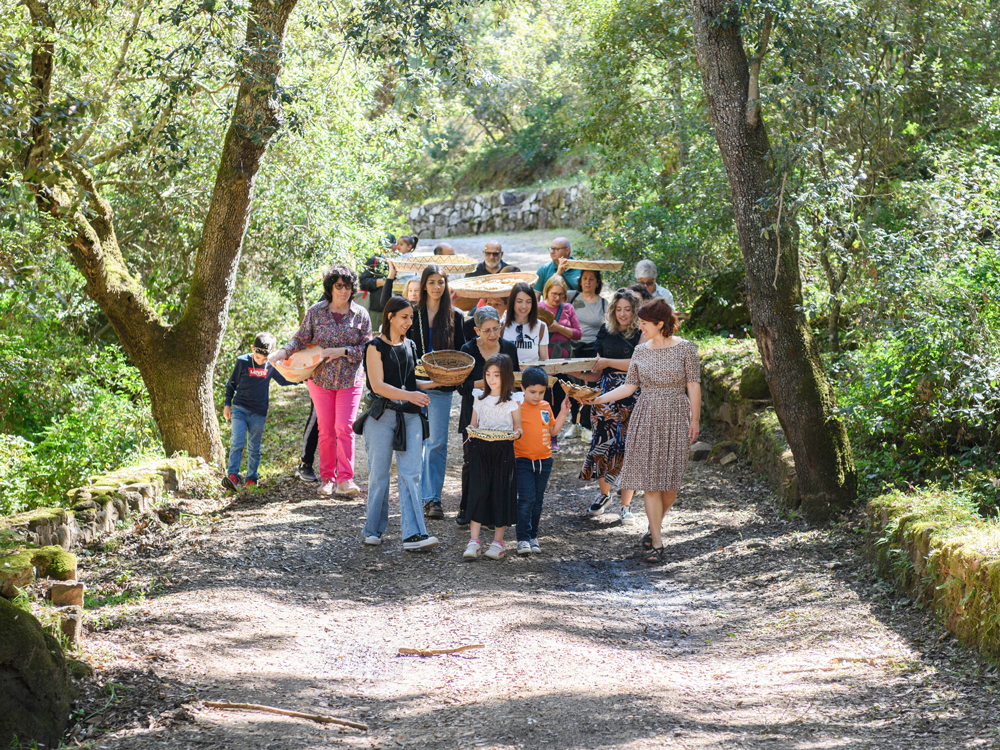– Elisabetta Masala –
…On Art and Relationships
There are invisible threads that connect people, places, and memories. When art becomes a shared gesture, it has the power to make those threads visible, weaving them into a common tapestry. In Sardinia, this power found one of its most striking expressions with Legarsi alla montagna (Binding to the Mountain), the action that Maria Lai carried out in Ulassai on September 8, 1981.
For one day, the entire village became a collective stage: twenty-six kilometers of blue ribbon tied together houses, balconies, and eventually the mountain itself—intertwining friendships, grudges, hopes, and memories in a single gesture. It was a communal ritual that, nearly two decades ahead of its time, anticipated the international discourse on relational art, later theorized in 1998 by French art critic Nicolas Bourriaud.
It is in this same spirit that the work of Ilaria Turba takes shape. At MAN, she presents the exhibition I pani del desiderio (The Breads of Desire). For the artist, art is a tool for listening and transformation, one that opens up spaces of encounter where individual desires can become collective. The project began in 2019 in the northern districts of Marseille, with open workshops where people from diverse backgrounds shaped loaves of bread, entrusting their dreams and words to shared forms. Baked in a communal oven, these breads evoked an ancient gesture of closeness, capable of uniting knowledge, stories, and dreams.
Over the years, Turba has collected hundreds of loaves and just as many desires, eventually arriving in Sardinia, a land where the traditions of ritual breads still thrive during community festivals. It was here, in the village of Villaurbana, that the project found its symbolic fulfillment: the breads returned to the fire, transforming into black powder. Not an end, but a rebirth, a collective act, at once a celebration and a metamorphosis, returning desires to matter and opening new paths for creation.
If Maria Lai, with her blue ribbon, taught us that art can bind communities and generate new stories, Ilaria Turba brings that lesson into the present, a time in need of shared desires to envision the future. At the heart of it all is not the object, but the relationship: the care in every gesture, the time spent together, the potential for beauty to emerge from encounter, Beauty that belongs to everyone. As Nicolas Bourriaud writes, “Every work of art would be a proposal to inhabit a shared world, and the work of each artist a web of relationships with the world—generating further relationships, and so on, endlessly.”

